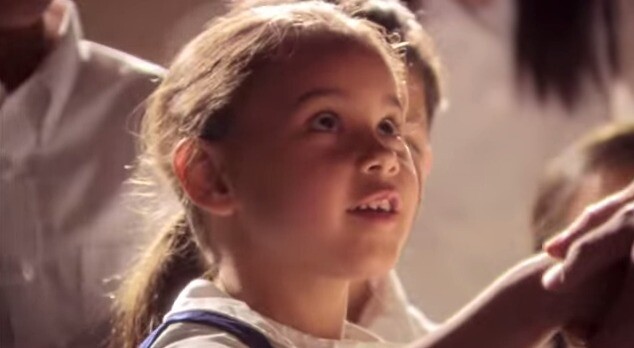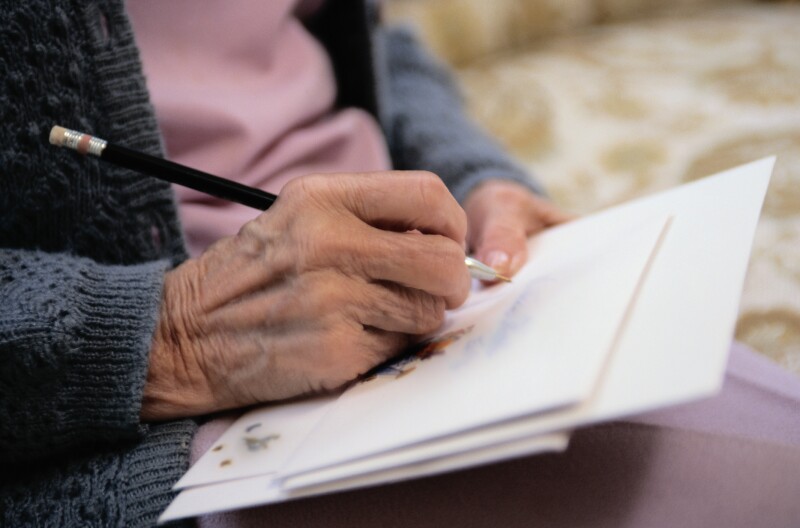A Missing Photograph Miracle
Brother Edwin Q. Cannon Jr., we call him Ted, was a missionary to Germany in 1938. He loved the people and served faithfully. At the conclusion of his mission, he returned home to Salt Lake City. He married and commenced his own business.
Forty years passed by. One day Brother Cannon came to my office and said he had been pruning his missionary photographs. (That’s a good word. You go through all of them, throw two away, and keep all rest.) Among those photographs he had kept since his mission were several which he could not specifically identify. Every time he had planned to discard them, he had been impressed to keep them, although he was at a loss as to why. They were photographs taken by Brother Cannon during his mission when he served in Stettin, Germany, and were of a family—a mother, a father, a small girl, and a small boy. He knew their surname was Berndt but could remember nothing more about them. He indicated that he understood there was a Berndt who was a Church leader in Germany, and he thought, although the possibility was remote, that this Berndt might have some connection with the Berndts who had lived in Stettin and who were depicted in the photographs. Before disposing of the photos, he thought he would check with me.
I told Brother Cannon I was leaving shortly for Berlin, where I anticipated that I would see Dieter Berndt, the Church leader, and that I would show the photographs to him to see if there was any relationship and if he wanted them. There was a possibility I would also see Brother Berndt’s sister, who was married to Dietmar Matern, a stake president in Hamburg.
The Lord didn’t even let me get to Berlin before His purposes were accomplished. I was in Zurich, Switzerland, boarding the flight to Berlin, when who should also board the plane but Dieter Berndt. He sat next to me, and I told him I had some old photos of people named Berndt from Stettin. I handed them to him and asked if he could identify those shown in the photographs. As he looked at them carefully, he began to weep. He said, “Our family lived in Stettin during the war. My father was killed when an Allied bomb struck the plant where he worked. Not long afterward, the Russians invaded Poland and the area of Stettin. My mother took my sister and me and fled from the approaching enemy. Everything had to be left behind, including any photographs we had. Brother Monson, I am the little boy pictured in these photographs, and my sister is the little girl. The man and woman are our dear parents. Until today, I had no photographs of our childhood in Stettin or of my father.”
Wiping away my own tears, I told Brother Berndt the photographs were his. He placed them carefully and lovingly in his briefcase.
At the next general conference, when Dieter Berndt visited Salt Lake City, he paid a visit to Brother and Sister Edwin Cannon Jr. so that he might express in person his gratitude for the inspiration that came to Brother Cannon to retain these precious photographs and for the fact that he followed that inspiration in keeping them for 40 years.
(Read the full talk, "Great Expectations," given in a CES fireside on Jan. 11, 2009)

A Phone Call for Strength
How well I remember the challenges confronting the youth in the ward over which I once presided as a bishop. One evening a lovely teenage girl came to my office with her boyfriend to talk things over with me. The two of them were very much in love, and temptation was beginning to get the best of them.
As we counseled together, each made a pledge to the other to resist temptation and keep uppermost in their minds the goal of a temple marriage. I suggested a course of action to follow and then felt impressed to say: “If you ever find yourselves in a position of compromise and need additional strength, you call me, regardless of the hour.”
One morning at 1:00 a.m., the telephone rang and a voice said: “Bishop, this is Susan. Remember how you asked me to call if I found myself being tempted? Well, Bishop, I’m in that situation.” I asked where she was, and she described a popular parking spot in the Salt Lake Valley. She and her fiancé had walked to a nearby phone booth to make the call. The setting wasn’t ideal for providing counsel, but the need was great, and the young couple was receptive.
I won’t mention how often Susan called. However, when the mailman delivered her wedding announcement to our home and Sister Monson read, “Mr. and Mrs. Jones request the pleasure of your company at the wedding reception of their daughter, Susan,” she sighed, “Thank heaven!” When I noticed the small print at the bottom, which read, “Married in the Salt Lake Temple,” I said silently, “Thank heaven for the strength of Latter-day Saint youth.”
(Read the full talk, "Decisions Determine Destiny," given in a CES fireside on Nov. 6, 2005)

A Surprising House Guest
On one occasion while visiting the Indianapolis Stake, I remember President Low, who is with Purdue University there, saying to me, "Brother Monson, would you like to come out to my home and stay with us, or would you prefer to forgo that forty-mile drive and stay here with my counselor in Indianapolis?"
I responded, "Well, President Low, it's late at night, and if it's all the same to you I'll stay with your counselor here in Indianapolis."
The next morning President Low greeted me at eight o'clock and said, "Elder Monson, you made an inspired decision."
I said, "How's that?"
He replied, "Well, we have a son away at Brigham Young University, and our anticipation was that we, of course, would have you occupy our bedroom on Saturday evening. But unknown to us, and totally unexpectedly, our son returned from Brigham Young University at two in the morning, came in the front door, walked up the stairs to our bedroom, turned on the light, and yelled, 'Surprise!'" I don't know who would have been more surprised on that occasion, the Brigham Young University student or Elder Monson.
(Read the full talk, "A Time to Choose," given in a BYU devotional on Jan. 16, 1973)

Prayers Answered in Samoa
Many years ago, on my first visit to the fabled village of Sauniatu in Samoa, so loved by President David O. McKay, my wife and I met with a large gathering of small children—nearly 200 in number. At the conclusion of our messages to these shy, yet beautiful youngsters, I suggested to the native Samoan teacher that we go forward with the closing exercises. As he announced the final hymn, I suddenly felt compelled to greet personally each of these children. My watch revealed that the time was too short for such a privilege, for we were scheduled on a flight out of the country, so I discounted the impression. Before the benediction was to be spoken, I again felt that I should shake the hand of each child. I made the desire known to the instructor, who displayed a broad and beautiful Samoan smile. In Samoan he announced this to the children. They beamed their approval.
The instructor then revealed to me the reason for his and their joy. He said, “When we learned that a member of the Council of the Twelve was to visit us here in Samoa, so far away from Church headquarters, I told the children that if they would earnestly and sincerely pray and exert faith like the Bible accounts of old, the Apostle would visit our tiny village at Sauniatu, and, through their faith, he would be impressed to greet each child with a personal handclasp.” Tears could not be restrained as the precious boys and girls walked shyly by and whispered softly to us the sweet Samoan greeting “talofa lava.” A profound expression of faith had been evidenced.
Remember that faith and doubt cannot exist in the same mind at the same time, for one will dispel the other.
(Read the full talk, "Guideposts for Life's Journey," given at a BYU devotional on Nov. 13, 2007)

A Testimony for a Teacher
Our daughter, Ann, who is in the audience today, turned five shortly after we arrived in Canada. She saw the missionaries going about their work and she, too, wanted to be a missionary. My wife demonstrated understanding by permitting Ann to take to class a few copies of the Children’s Friend. That wasn’t sufficient for Ann. She also wanted to take with her a copy of the Book of Mormon so that she might talk to her teacher, Miss Pepper, about the Church. I think it rather thrilling that just a few years ago, long years after our return from Toronto, we came home from a vacation and found in our mailbox a note from Miss Pepper which read:
Dear Ann: Think back many years ago. I was your schoolteacher in Toronto, Canada. I was impressed by the copies of the Children’s Friend which you brought to school. I was impressed by your dedication to a book called the Book of Mormon. I made a commitment that one day I would come to Salt Lake City and see why you talked as you did and why you believed in the manner you believed. Today I had the privilege of going through your visitors’ center on Temple Square. Thanks to a five-year-old girl who had an understanding of that which she believed, I now have a better understanding of The Church of Jesus Christ of Latter-day Saints.
Miss Pepper died not too long after that visit. How happy our daughter Ann was when she attended the Jordan River Temple and performed the temple work for her beloved teacher to whom she had reached out so many years ago.
(Read the full talk, "Guideposts for Life's Journey," given at a BYU devotional on Nov. 13, 2007)

Being an Example in All Places
In speaking of those who are unafraid to live lives of righteousness and example, I am reminded of one of the missionaries who served in Eastern Canada when I was the mission president there. He was a special young man by the name of Elder Roland Davidson. He was dedicated and hardworking and obviously loved the gospel of Jesus Christ. And then he became very ill. After weeks of hospitalization, as the surgeon prepared to undertake extremely serious and complicated surgery, the surgeon asked that we send for the missionary’s parents. He indicated that there was a great likelihood that Elder Davidson could not survive the surgery. His parents came. The evening before the surgery, his father and I, in that hospital room in Toronto, Canada, placed our hands upon the head of that young missionary and gave him a blessing. What happened the following day provided for me a never-to-be-forgotten example of the influence of a true “believer.”
Elder Davidson was in a six-bed ward in the hospital. The other beds were occupied by five men with a variety of illnesses. On the morning of Elder Davidson’s surgery, his bed was empty. I learned later that the nurse came into the room with the breakfast these husky men normally ate. She took a tray over to bed number one and said, “Fried eggs this morning, and I have an extra portion for you.” Bed number one was occupied by a man with his toe wrapped up in a bandage. He had suffered an accident with his lawnmower. Other than his injured toe, he was well physically. He said to the nurse, “I’ll not be eating this morning.”
“All right,” said the nurse. “We’ll give your breakfast to your partner in bed number two!”
As she went over to bed number two, he said, “No, thank you. I think I’ll not eat this morning.”
She said, “That’s two in a row. I don’t understand you men, and there is no one this morning in bed three.” She glanced at the bed Roland Davidson had occupied, and then she went on to bed four, bed five, and bed six. The answer was the same from each one: “No, this morning I’m not hungry.”
The young lady put her hands on her hips and said, “Every other morning you eat us out of house and home, and today not one of you wants to eat. What’s going on here?”
And then the man who occupied bed number six came forth with the answer. He said, “You see, bed number three is empty. Our friend, Davidson, is in the operating room under the surgeon’s hands. He needs all the help he can get. He is a missionary for his church, and while he has been lying on that bed he has talked to us about the principles of his church—principles of prayer, of faith, and of fasting wherein we call upon the Lord for blessings.” He continued, “We have come to admire Davidson as a person of great goodness and compassion and faith. He’s an example of what a follower of Christ should be. He has touched our lives—each one of us—and we are fasting for him today.”
The operation performed on Roland Davidson was a success. In fact, when I attempted to pay the surgeon, he refused any money, saying, “It would be dishonest for me to accept a fee. I have never before performed surgery when my hands seemed to be guided by a power which was other than my own. No,” he said, “I wouldn’t take a fee for the surgery which Someone on high helped me to perform.”
(Read the full talk, "Be a Light to the World," given at a BYU devotional on Nov. 1, 2011)
For more great stories from President Monson, be sure to check out Consider the Blessings.
Editor’s note: This article was originally published on LDSLiving.com in June 2017.
